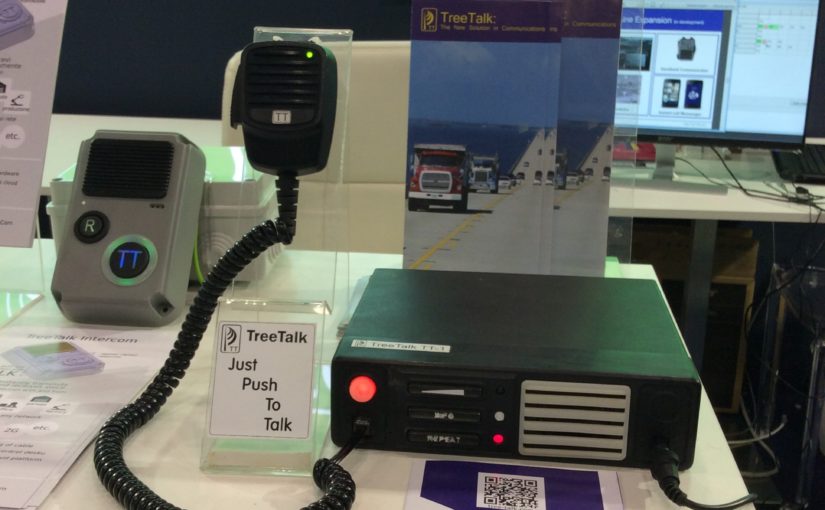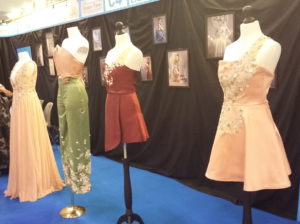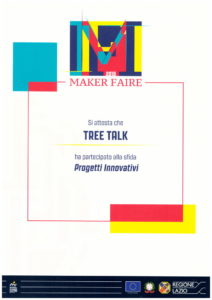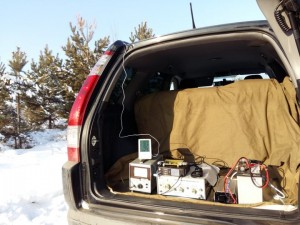Video, che chiarisce i dispositivi, il software e l’infrastruttura TreeTalk – in 90 secondi, in inglese, con sottotitoli in Italiano:
Tag: Terminal
New TreeTalk video
Video, clarifying the TreeTalk devices, software and infrastructure in 90 seconds, in English:
TreeTalk at Maker Faire Roma 2018 – European Edition
TreeTalk has demonstrated the working prototypes of devices, software and cloud system at Maker Faire Roma 2018 – European Edition.
TreeTalk became the finalist of the Call4Makers competition in the Innovative Projects category and presented its promising products at the Regione Lazio stand. It is a great honor for us to represent this Italian region at such a major international event.
Maker Faire is the Greatest Show on Earth in the field of invention and creativity. And Maker Faire Rome is the world’s largest Maker Faire exhibition after the “Bay Area” and “New York” in the US. Over 100,000 people participated at the biggest European innovation event in 2018.
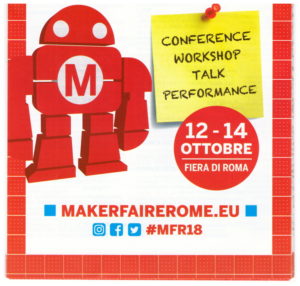 It was an amazing 3-day event, transmitting its energy to visitors and participants. Existing companies and promising projects in various fields, such as electronics and prototyping, robotics, space, 3D printing, virtual and augmented reality were presented at dozens of thematic sites of the Nuova Fiera di Roma exhibition center.
It was an amazing 3-day event, transmitting its energy to visitors and participants. Existing companies and promising projects in various fields, such as electronics and prototyping, robotics, space, 3D printing, virtual and augmented reality were presented at dozens of thematic sites of the Nuova Fiera di Roma exhibition center.
Universities, as well as business incubators and Active Spaces (Spazio Attivo) – innovative creative platforms of Lazio Innova, represented their projects. A special place was occupied by master classes and Science Show for young people and children. And, of course, in a country where the art has long become an integral part of everyday life, particular attention was attracted by the places where art and modern high technologies together created new interesting forms.
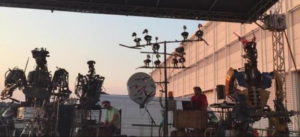 The attention of visitors was attracted by the tireless iron (literally) rock musicians of the One Love Machine Band, playing in the open air. Amazing products, decorations, clothes and art objects from traditional materials (wood, metal, ceramics, and fabrics), but created using digital technologies, were presented.
The attention of visitors was attracted by the tireless iron (literally) rock musicians of the One Love Machine Band, playing in the open air. Amazing products, decorations, clothes and art objects from traditional materials (wood, metal, ceramics, and fabrics), but created using digital technologies, were presented.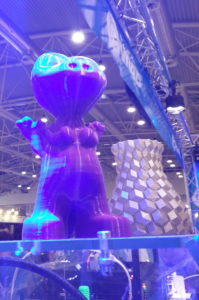
In addition to the entertainment program, the attention of specialists was attracted by high-tech solutions in the field of Industry and Business 4.0, revolutionary solutions for the retail, agriculture, food industry, and waste processing.
It is worth saying a little about the site where the exhibition was held.
Fiera Roma was opened in April 2006 and is one of the largest and most prestigious exhibition poles in Europe. This is a great architectural work, designed by the architect Tommaso Valle, and this is an excellent futuristic business center. The center is powered by the largest thin-film solar system in Italy, covering about 38,000 square meters of the pavilion roofs. The system generates 1.8 million kWh of clean energy per year.
In addition, Fiera Roma is a center for international trade and communications. Rome is not only a world-famous tourist destination but also a very important business center, strategically located in the midst of economic flows between north and south Italy and Europe. It is a bridge between old and new markets, equipped with modern and functional structures. The exhibition center is part of a multifunctional retail and office district with an area of more than 390,000 square meters.
Fiera di Roma is situated in a strategic location and is served by an excellent transport network. In addition to roads with convenient parking and interchanges, the complex has its own suburban railway platform (2 stops from the Fiumicino international airport or several stops from the center of Rome). At the time of the Maker Faire exhibition, the Italian railways not only increased the number of trains but also organized an information point on the platform with multilingual staff helping visitors to buy tickets and understand the routes.
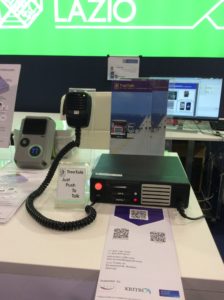 TreeTalk presented its promising developments at the exhibition. Those are the real-time voice communication devices: the prototype of the car voice communicator “The Terminal One” and the prototype of the stationary communicator “TreeTalk Intercom“. Also were demonstrated: a prototype of a user web interface for managing devices and their groups (TreeTalk Web Panel) and a prototype program for the PC TreeTalk Dispatcher, which combines the functionality of personnel task management and instant communication with a specific employee
TreeTalk presented its promising developments at the exhibition. Those are the real-time voice communication devices: the prototype of the car voice communicator “The Terminal One” and the prototype of the stationary communicator “TreeTalk Intercom“. Also were demonstrated: a prototype of a user web interface for managing devices and their groups (TreeTalk Web Panel) and a prototype program for the PC TreeTalk Dispatcher, which combines the functionality of personnel task management and instant communication with a specific employee 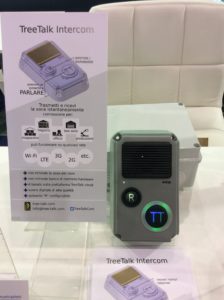 (selective call) or with the whole team (group call).
(selective call) or with the whole team (group call).
We are grateful to the jury of the Call4Makers contest for the high appreciation of our developments and the opportunity provided. Thanks to participation in the exhibition, we were able to acquaint many people with our developments and get extremely useful feedback that will allow us to improve our prospective products.
TreeTalk: The Terminal One – Field Tests 2018. Summer. Hot Summer.
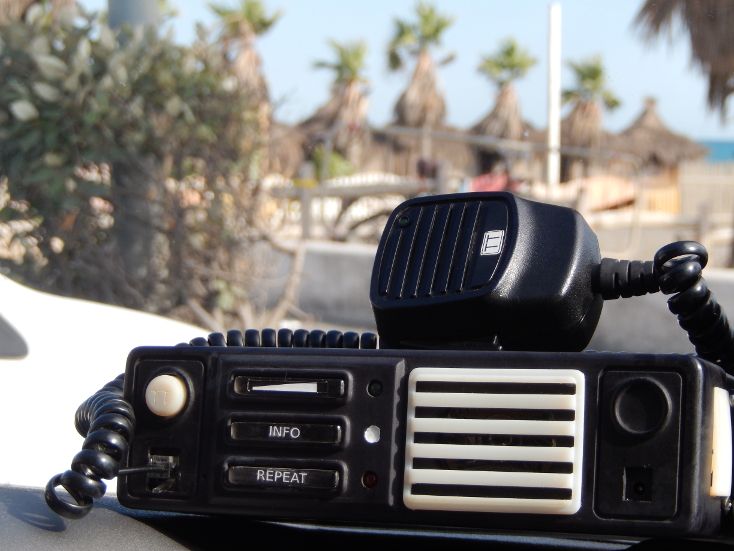
Moving to the other city to the other country and is very time consuming. And, of course, is exciting. Especially if “the other city” is the Eternal City. Any movement is also distracting, but we are strong 🙂 So, despite the traditional Italian vacation time, we are trying to work. August is hot this year, and people run to the seaside. But we are already here and ready to take full advantage of the ardent heat.
If you can remember, once upon a time, we tested our very first prototype in the really harsh conditions of Siberian winter. Now we have reincarn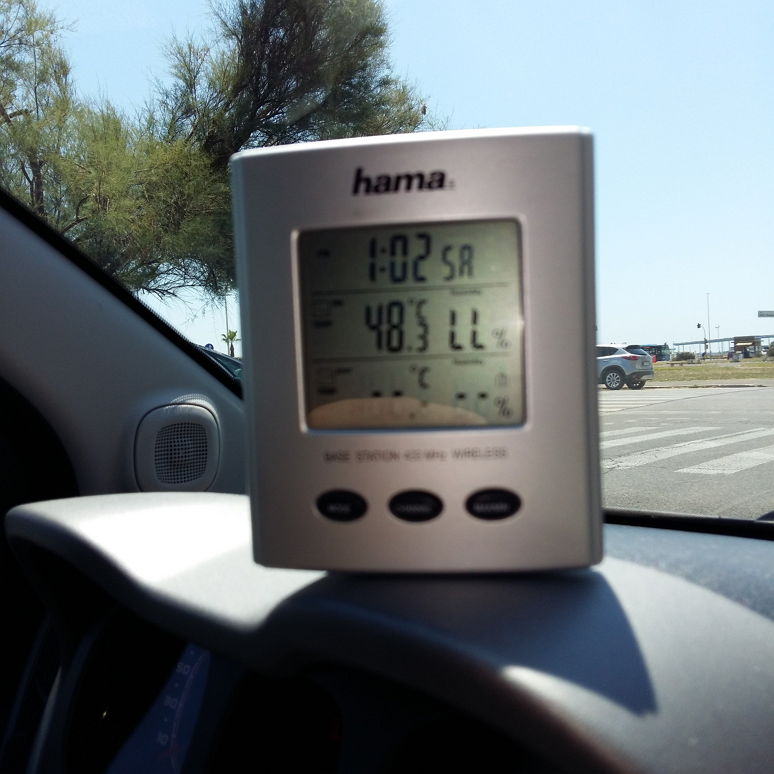 ation number 3 of that prototype, and it’s time to trial it under the Southern sun. The conditions appear harsh enough, too, but in the opposite sense. The terminal was subject to temperature extremes up to +55 Celsius (131 Fahrenheit). The temperature inside the black metallic enclosure was 10-20 degrees more. During the test time, the built-in audit system recorded the slightest failures in the network connection, in the electronics and embedded firmware.
ation number 3 of that prototype, and it’s time to trial it under the Southern sun. The conditions appear harsh enough, too, but in the opposite sense. The terminal was subject to temperature extremes up to +55 Celsius (131 Fahrenheit). The temperature inside the black metallic enclosure was 10-20 degrees more. During the test time, the built-in audit system recorded the slightest failures in the network connection, in the electronics and embedded firmware.
We have got a lot of data, most of which we still have to process, but we have first interesting results.
Spoiler: most of the tests completed successfully, clearly confirming the advantages of the TreeTalk terminal over conventional and trunked radios in the reliability and quality of the voice and in the convenience of handling.
Contrary to expectations, the extreme heat itself did not effect electronics much. But we could mark, thanks to specific environments, two peculiarities.
First one is an unstable data transfer speed of the local mobile carrier. Despite the fact that the signal almost did not disappear anywhere at all, the real data transfer speed varied in the wider range, then we use to see earlier, and the frequency switched from 3g to 4g and back more often. Perhaps, this effect is tied to uneven distribution of tourists (and their smart phones). Fortunately, our specially developed protocol, and speech-compression technology was made for working in low-speed second-generation networks. So, “LTE tourist challenge” was not a problem for our device.
 Also, we found, that stability of geo-positioning was not as good as always in the narrow streets and small squares of the old Rome center. Sometimes, the majority of satellites became invisible to the GPS antenna, and precision of geo-positioning deteriorated. It seems to me, we finally unraveled the reason for the mysterious disappearances and quantum leaps of Roman buses on the maps of transport applications 🙂
Also, we found, that stability of geo-positioning was not as good as always in the narrow streets and small squares of the old Rome center. Sometimes, the majority of satellites became invisible to the GPS antenna, and precision of geo-positioning deteriorated. It seems to me, we finally unraveled the reason for the mysterious disappearances and quantum leaps of Roman buses on the maps of transport applications 🙂
Quite seriously, we anticipated this issue and evident solution will be to try using the geo-positioning chips that have real-time multi-system tuner, instead of a multi – system tuner, working in the switching mode. Perhaps, we should also slightly tune the predictive algorithm in order to make it more intelligent in the such cases. All these improvements will be done in the next version of the hardware. We hope that the next version of the terminal will be even more robust.
TreeTalk Device Road Test
Here is a small (2.5 min) video report from the TreeTalk prototype road test.
Real-life test of TreeTalk terminal and system. Part 1. Hands-on.
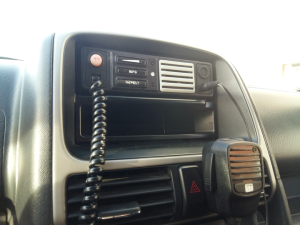
TreeTalk has begun conducting the real-life tests of the voice terminal. Now the prototypes are being tested in the cars, which is riding around the city and near suburbs in a mode of normal use. Thus, during parking, warm-up and on the move the terminals are subject to temperature extremes from -30 to +20 Celsius (-22 to +68 Fahrenheit). All this time, the built-in audit system records the slightest failures in the network connection, the electronics and embedded firmware.
First trial run confirmed all of the declared advantages of TreeTalk solution. Yes, it still looks like a professional (conventional or trunked) two-way radio. It inherits the pluses of LMR/PMR: broadcasting, constant connection, instant calls, and simplicity. Additionally, TreeTalk adds its own features.
The differences are becoming clear from the very beginning.
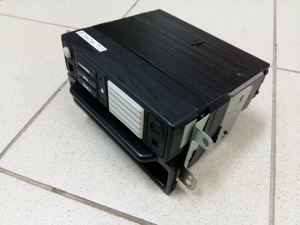 First, users of the TreeTalk devices do not need to spend time and effort to complex mounting. The device fits the standard 1-DIN slot perfectly and there is still enough place remaining for the car audio. Professional transceivers are heavy and usually hot. They are energy consuming, thus require dedicated power line from the car battery, made of thick wires. In contrary, TT terminal is light in weight and require minimum power (0.5 Amp). It is omnivorous (10-26 V), so did not require any special DC-DC converter. Its installation is easy, because our specimen has not any wires or connectors on the back panel to connect somewhere.
First, users of the TreeTalk devices do not need to spend time and effort to complex mounting. The device fits the standard 1-DIN slot perfectly and there is still enough place remaining for the car audio. Professional transceivers are heavy and usually hot. They are energy consuming, thus require dedicated power line from the car battery, made of thick wires. In contrary, TT terminal is light in weight and require minimum power (0.5 Amp). It is omnivorous (10-26 V), so did not require any special DC-DC converter. Its installation is easy, because our specimen has not any wires or connectors on the back panel to connect somewhere.
Strict design looks good in the dashboard of the car. Frontal speaker gives a sound loud enough, even on the medium volume level.
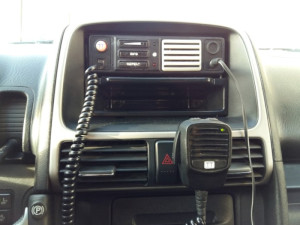
Second, TreeTalk terminal works without any external antenna. Radio hobbyists and professionals know that antenna, sticking out of the car top, is a weak spot and eternal headache. It is always going to be lost or broken, and the cable tends to be tangled and torn. So no antenna – no problem.
Third, the terminal is very friendly. All manipulations with the buttons are accompanied by signals or voice announcements (in English). If you miss the last message, led indicates that it is recorded — you can just push ‘REPEAT’ button to listen to it. (If you did not understand or resolve some important information, you can make that again).
(To be continued…)
Field Tests – 2016. Winter.
TreeTalk has conducted regular field tests of the voice terminal prototype.
The terminal is designed for professional control room and group real time communications. In fact, this is a new class of mobile devices, in which the traditional strengths of radio communication (instant connection, broadcasting and simplicity) were coupled with the advantages of modern data networks. The voice signal is digitized, compressed, and transmitted by the Terminal to other similar devices and dispatching computers without loss of quality. Thanks to a specially developed protocol, even low-speed second-generation network, covering 90% of the world population may be used as a transport medium.
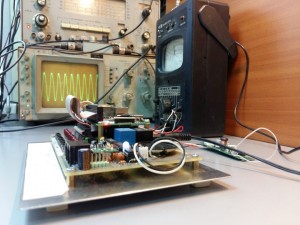
The methodology of the current test was designed to assess the stability of the device and firmware in real operating conditions.
Within 14 days the equipment was tested around the clock in the laboratory. After that, within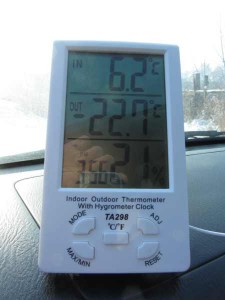 7 days the experimental model of the terminal was working in a car that was moving around the city and nearby suburbs in a mode of normal use. Thus, during parking, warm-up and on the move the terminal subjected to temperature extremes from -30 to +20 Celsius (-22 to +68 Fahrenheit). All this time, built-in audit system was recording the slightest failures in the network connection, the electronics and embedded firmware.
7 days the experimental model of the terminal was working in a car that was moving around the city and nearby suburbs in a mode of normal use. Thus, during parking, warm-up and on the move the terminal subjected to temperature extremes from -30 to +20 Celsius (-22 to +68 Fahrenheit). All this time, built-in audit system was recording the slightest failures in the network connection, the electronics and embedded firmware.
Then, a mobile measuring and laboratory benches were installed and the parameters of the speech signal were measured (in particular, the signal-to-noise ratio and frequency response), which describe the intelligibility and voice recognition when it is transferred from the terminal to other terminals or to the control room computer.
Current testing has been specially planned for the winter period and held in harsh conditions. However, most of the tests completed successfully, clearly confirming the advantages of the TreeTalk terminal in the reliability and quality of the voice, and the convenience of handling over conventional and trunked radios.
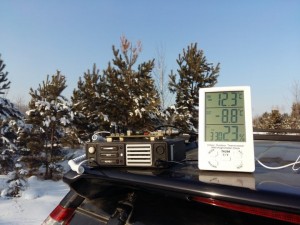
Users of TT terminals do not need to spend time and effort to obtain radio frequencies, search for a suitable location for the control tower and to install bulky antennas. It will be sufficient to purchase the required number of terminals and combine them into a virtual channel via a simple web interface to start using. TreeTalk LLC specialists believe that their technology, due to the convenience, the digital signal quality and additional features, will soon replace the obsolete analogue radio and will be used wherever you need a reliable, constant and instant voice communication.
